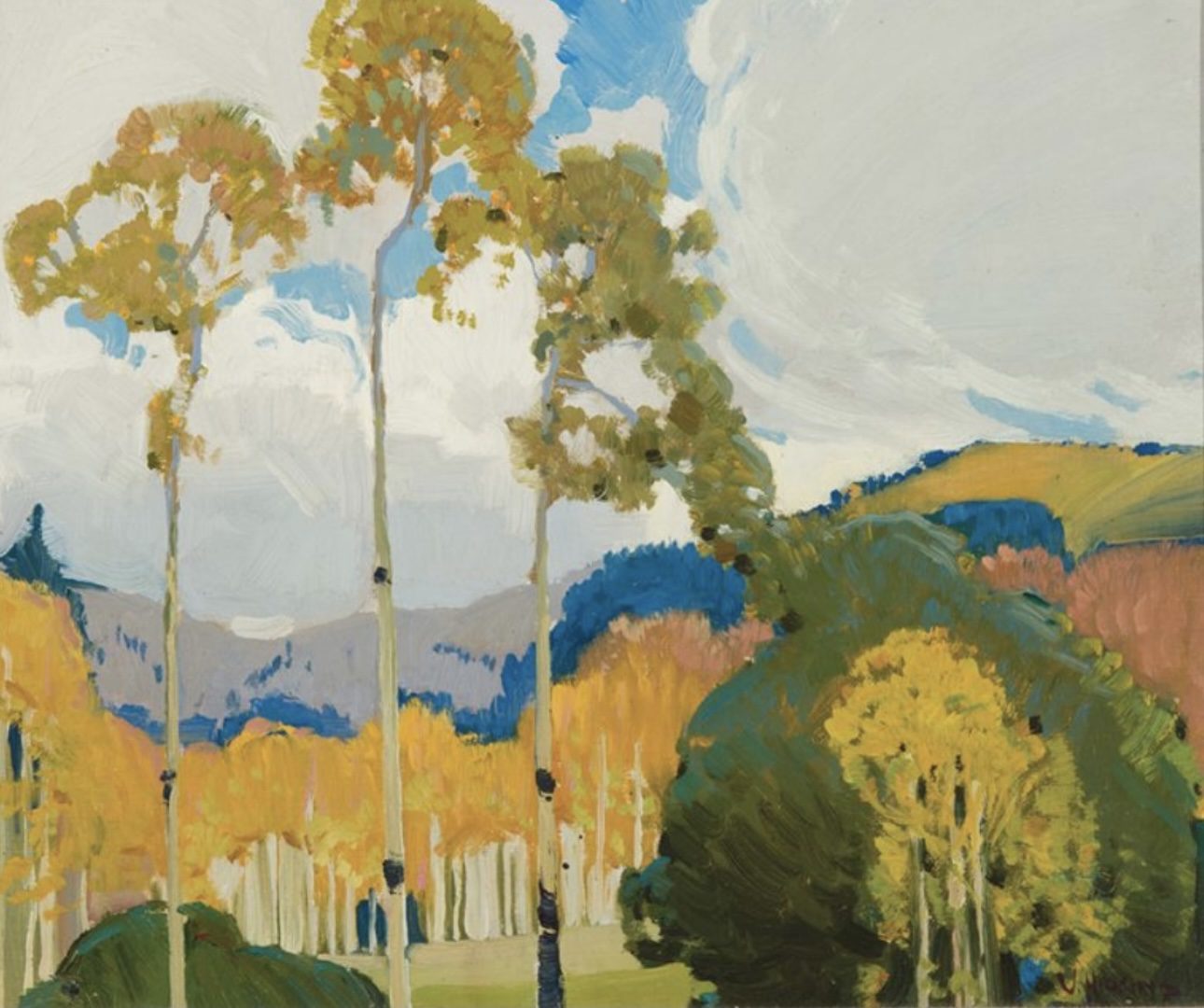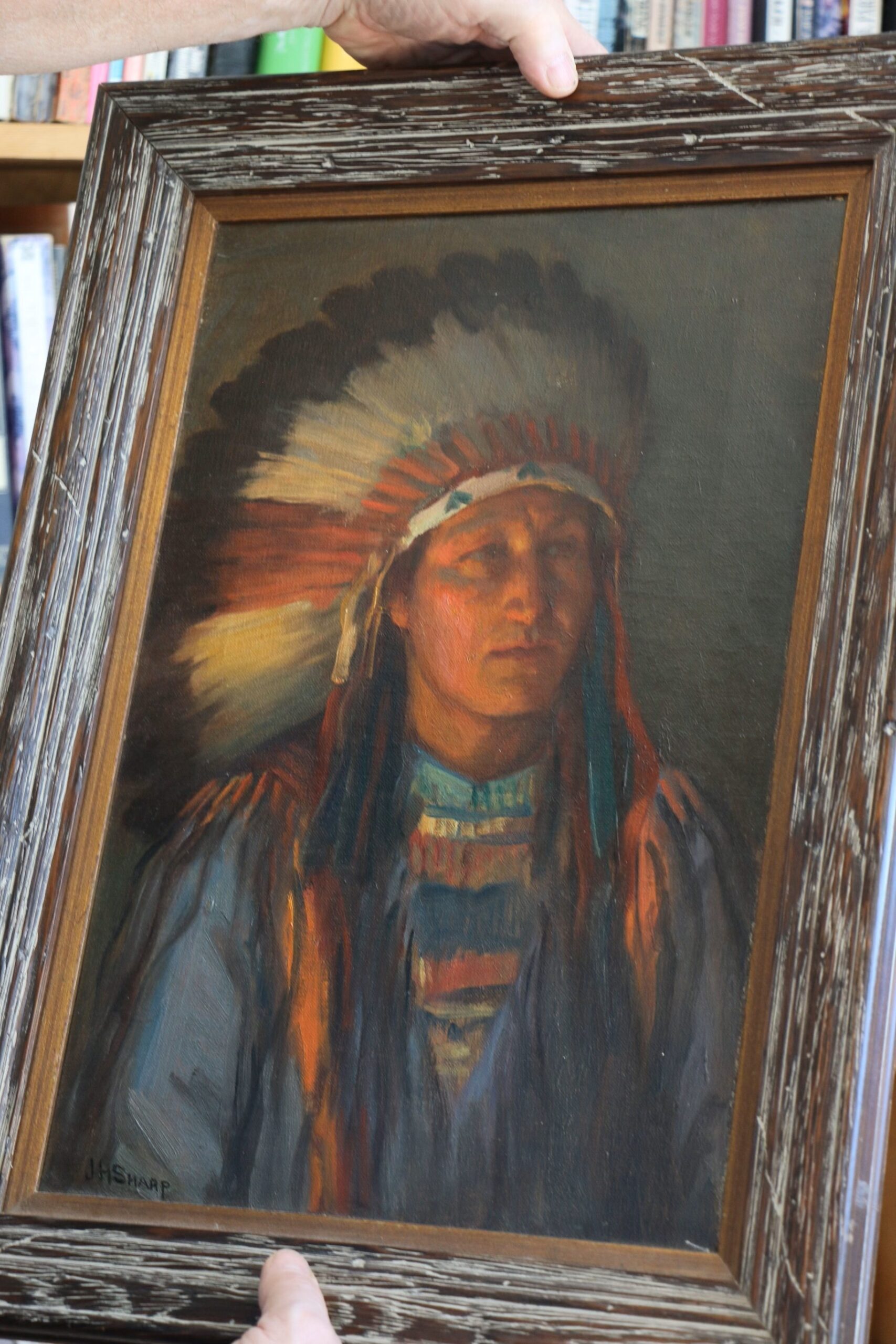4 Investigates: The Harwood heist
They are lesser known and less valuable, but no less important to the people of Taos. Two paintings vanished decades ago from the walls of what would later become the Harwood Museum of Art.
The mystery of their disappearance in 1985 seemed to remain just that, until a curious man in California began scouring the internet. He followed a hunch that now has the attention of the FBI.
Lou Schachter
“I am retired, basically,” Lou Schachter said from the driver seat of his Mercedes. “What I do is combine interesting crime stories from the past with travel around the country.”
He writes for Medium.com and had always been intrigued by the story of Jerry and Rita Alter.
It’s a story 4 Investigates covered. The return of an over $100 million stolen Willem De Kooning painting in 2018 following the deaths of Jerry and Rita Alter.
The Alters were never charged with any crime; never even suspected until after their deaths.

Many believe they stole the De Kooning, including Schachter.
Schachter had a lingering question, “If they stole that painting, how come nothing else was stolen that was found in their estate?”
It drove him to search the internet for pictures of art the Alters had in their home. He honed in on this picture showing Jerry Alter in his living room with two paintings on his wall. Searching for paintings on the internet proved difficult. Image searches only got him so far: the titles of paintings – especially lesser-known paintings – are not always well documented. Finally, a poster company identified one of the pictures as Victor Higgins’ “Aspens.”
“That painting was photographed and there was a picture of it in the book,” Schachter said. “The picture said that it was owned by the Harwood Foundation in Taos. That was really the first connection to Taos.”
That led him to a Taos News article from 1985 that read, “Two valuable and historic paintings were stolen in broad daylight…”
4 Investigates found the paintings are particularly meaningful to people in northern New Mexico as both artists were members of the Taos Society of Artists.
The Harwood Museum of Art
Juniper Leherissey is the executive director of the Harwood Museum of Art in Taos. She got the call late last year.
“Lou Schachter reached out to me and said, ‘These works appear to have been part of the Harwood’s and were stolen in 1985.’” Leherissey said. “I was like, ‘Really? What?!’”
It took her collections manager 30 minutes to verify there had been an art theft in 1985.
“I was surprised,” Leherissey said. “Kind of amazing to learn that these works were stolen.”
Victor Higgins’ “Aspens,” and Joseph Henry Sharp’s “Oklahoma Cheyenne,” also known as, “Indian Boy in Full Dress,” vanished from the walls of the Harwood on March 20th, 1985.
Leherissey formed an art recovery taskforce that went to work gathering documentation, reaching out to experts, witnesses, and people who remember the theft.
People like David Witt.
“I did consider it a sort of personal affront,” Witt said.
He was the curator in 1985 when the Harwood functioned as a library. On the day of theft, he was at a conference regarding museum security. He remembers hanging the Higgins and Sharp paintings by anchoring them to the wall. In the case of the Higgins’ piece the thief broke the canvas and three sides of the frame, leaving the bottom piece of the frame hanging on the wall.
“A curator never really gets over this,” Witt said. “This is stealing our heritage, and I’m the one in charge.”
Witt’s handwritten notes show a suspicious-looking man with a mustache, frizzy hair, and black raincoat left the gallery before it was discovered the paintings were gone. A police report shows a woman in a wheelchair had potentially distracted the librarian asking for assistance with the elevator before the theft.
Witt’s notes also show the great lengths he went to alerting the art world, and law enforcement about the theft.
The FBI wouldn’t take the case. “The FBI [stolen art] register, at the time, only included works that were valued at more than 50,000 dollars,” Witt said.
The Taos Police report from 1985 shows Higgins’ painting appraised for $35,000, Sharp’s appraised for $12,500.
Later that year, across state lines, a similar art theft would take place in Arizona.
“They were art thieves”
David Van Auker is not shy about his feelings on the Alters.
“I think they’re horrible people,” he said.

Van Auker and Buck Burns own the Manzanita Ridge Furniture and Antique store in Silver City, New Mexico. They unwittingly became central characters in this story after purchasing De Kooning’s “Woman-Ochre” for $200 in the Alters’ estate sale. Later they discovered it had been stolen in Arizona in 1985 and was worth more than $100 million.
“The way we were all raised, it doesn’t matter if it’s $100, or $100 million dollars. The price doesn’t matter. Stolen, is stolen,” Van Auker said. They returned the painting and almost everything from the Alters’ estate is gone.
Almost everything.
“This is documentation of their travels, there might be something in here,” Van Auker said while holding one of the Alters’ travel journals.
The Alters were from modest means but were somehow able to afford travels across the globe. They meticulously documented much of their lives in series of journals. The one from 1985 brought Schachter to Silver City.
“I’m struck that the two thefts we know about in Taos and Tucson are empty pages in the journal,” Schachter said.

The days before and after the Higgins and Sharp paintings were stolen on March 20th, 1985 the travel journal is blank. It’s the same story with the day the De Kooning was stolen.
“People say, ‘Well, the Alters got away with it. They got away with their crime.’ I want to make sure that’s not the way it goes,” Van Auker said. “The Alters did horrible things, and I don’t want their legacy to be, ‘What nice people they were, what great neighbors they were.’ They were art thieves. They stole from all of us.”
The executor of the Alters’ estate declined to comment.
Where are the Taos paintings now?
“We can’t take this, this is too valuable,” Julie Enos recalls someone said regarding the Alters’ donated art.
Before Van Auker and Burns walked through the Alters’ home looking for anything of value, the executor of the Alters’ estate donated several artworks to the Town and Country Garden Club in Silver City. Its primary function was running a thrift store in town to fund maintenance of the rose garden at the local cemetery.
“They had never been given a donation this large,” Enos said. She worked as a volunteer photographer and took pictures of the art. She said she remembered the group identifying five pieces of value, including the Higgins and Sharp paintings.
Those five pieces then went to the Scottsdale Art Auction selling collectively for nearly $150,000.
The now-defunct Garden Club spent all the proceeds.
“They gave away money to charity. They gave away money to nonprofits and for scholarships at the [Western New Mexico] University,” Enos said.
The Scottsdale Art Auction would not tell 4 Investigates who purchased the paintings but said in a statement that staff checked to make sure the paintings were not in the FBI’s stolen art database.
The FBI has taken copies of all of Enos’ pictures and is now investigating. The agency would not comment further.
“Somebody knows where these are,” Witt said. “We want them back.”
If you have seen the two paintings, you can contact the FBI’s stolen art tip line.
Statement from the Scottsdale Art Auction:
The Scottsdale Art Auction has been in business since 2005 and has sold over 7,000 original works of art. We do our due diligence to prevent the sale of stolen goods which we have not experienced to date. At the time of taking these two works on consignment, we checked the FBI’s National Stolen Art File and neither painting was listed – nor are they listed today. We will cooperate completely with the FBI in this matter; though at this point we have not heard from them.

